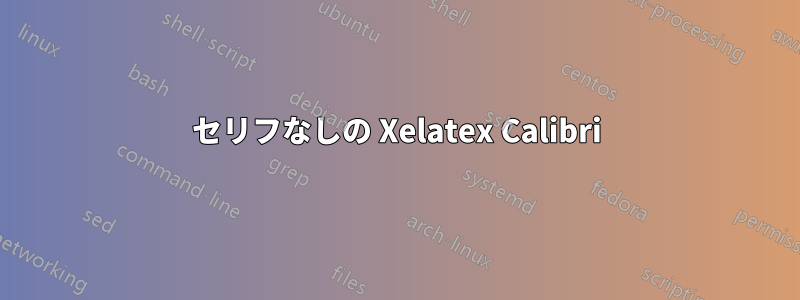
Calibri で文書を書かなければなりません。その後に私の最小限の例を見つけてください。問題は、数式を含めるとデザインが「醜く」見えることです。
セリフ数式フォントと数字を、Calibri に近い SANS-SERIF に変更する方法はありますか?
\documentclass[11pt]{article}
\usepackage{fontspec}
\usepackage{xltxtra}
\usepackage{lipsum}
\setmainfont[Mapping=tex-text]{Calibri}
\begin{document}
\begin{table}
\begin{center}
\begin{tabular}{l c }
\hline
& Model 1 \\
\hline
(Intercept) & $10.9983^{***}$ \\
& $(0.0420)$ \\
a & $0.0040^{**}$ \\
& $(0.0016)$ \\
b & $0.0053^{***}$ \\
& $(0.0012)$ \\
c & $0.0052^{***}$ \\
& $(0.0001)$ \\
\hline
R$^2$ & 0.9317 \\
Adj. R$^2$ & 0.9309 \\
Num. obs. & 243 \\
\hline
\multicolumn{2}{l}{\scriptsize{\textsuperscript{***}$p<0.01$,
\textsuperscript{**}$p<0.05$,
\textsuperscript{*}$p<0.1$}}
\end{tabular}
\caption{Statistical models}
\label{table:coefficients}
\end{center}
\end{table}
Loremipsumdolorsitamet,consectetueradipiscingelit. Utpuruselit,ves?bu-
lum ut, placerat ac, adipiscing vitae, felis. Curabitur dictum gravida mauris. Nam
arcu libero, nonummy eget, consectetuer id, vulputate a, magna. Donec vehicula
augueeuneque.
\[
\bar{x} = \frac{x_1+x_2+\cdots +x_n}{n}
\]
\end{document}

答え1
使用unicode-math:
\documentclass[11pt]{article}
\usepackage{unicode-math}
\usepackage{lipsum}
\setmainfont[Mapping=tex-text]{Calibri}
\setmathfont{XITS Math}% for the symbols
\setmathfont[range=\mathup]{Calibri}
\setmathfont[range=\mathit]{Calibri-Italic}
\begin{document}
\begin{table}
\centering
\begin{tabular}{l c }
\hline
& Model 1 \\
\hline
(Intercept) & $10.9983^{***}$ \\
& $(0.0420)$ \\
a & $0.0040^{**}$ \\
& $(0.0016)$ \\
b & $0.0053^{***}$ \\
& $(0.0012)$ \\
c & $0.0052^{***}$ \\
& $(0.0001)$ \\
\hline
R$^2$ & 0.9317 \\
Adj. R$^2$ & 0.9309 \\
Num. obs. & 243 \\
\hline
\multicolumn{2}{l}{\scriptsize{\textsuperscript{***}$p<0.01$,
\textsuperscript{**}$p<0.05$,
\textsuperscript{*}$p<0.1$}}
\end{tabular}
\caption{Statistical models}\label{table:coefficients}
\end{table}
Loremipsumdolorsitamet,consectetueradipiscingelit. Utpuruselit,ves?bu-
lum ut, placerat ac, adipiscing vitae, felis. Curabitur dictum gravida mauris. Nam
arcu libero, nonummy eget, consectetuer id, vulputate a, magna. Donec vehicula
augueeuneque.
\[
\bar{x} = \frac{x_1+x_2+\cdots +x_n}{n}
\]
\end{document}

答え2
利用できる Unicode サンセリフ数学フォントはありません。ドキュメントで数学をわずかにしか使用していない場合は、mathspecが役立ちます。
Calibri を持っていないので、TeX Gyre Heros を使用します。
\documentclass[11pt]{article}
\usepackage{mathspec}
\usepackage{lipsum}
\setmainfont[Ligatures=TeX]{TeX Gyre Heros}
\setmathsfont(Digits,Latin,Greek){TeX Gyre Heros}
\begin{document}
\begin{table}
\centering
\begin{tabular}{l c }
\hline
& Model 1 \\
\hline
(Intercept) & $10.9983^{***}$ \\
& $(0.0420)$ \\
a & $0.0040^{**}$ \\
& $(0.0016)$ \\
b & $0.0053^{***}$ \\
& $(0.0012)$ \\
c & $0.0052^{***}$ \\
& $(0.0001)$ \\
\hline
R$^2$ & $0.9317$ \\
Adj. R$^2$ & $0.9309$ \\
Num. obs. & $243$ \\
\hline
\multicolumn{2}{l}{\scriptsize{\textsuperscript{***}$p<0.01$,
\textsuperscript{**}$p<0.05$,
\textsuperscript{*}$p<0.1$}}
\end{tabular}
\caption{Statistical models}
\label{table:coefficients}
\end{table}
\lipsum*[2]
\[
\bar{x} = \frac{x_1+x_2+\cdots +x_n}{n}
\]
\end{document}
ドキュメントへの変更に注意してください: を読み込まないでください。内部でxltxtra使用しないでください。表示される数式の前に空白行を残さないでください。centertable

おそらく、テーブルをタイプセットするより良い方法は、siunitxと を使用することですbooktabs。
\documentclass[11pt]{article}
\usepackage{mathspec}
\usepackage{siunitx}
\usepackage{booktabs}
\usepackage{lipsum}
\setmainfont[Ligatures=TeX]{TeX Gyre Heros}
\setmathsfont(Digits,Latin,Greek){TeX Gyre Heros}
\begin{document}
\begin{table}
\newcommand\tnote[1]{${}^{#1}$}
\centering
\begin{tabular}{
l
S[table-format=2.4,
table-space-text-post=\tnote{***},
]
}
\toprule
& {Model 1} \\
\midrule
(Intercept) & 10.9983\tnote{***} \\
\addlinespace[-.4ex]
& {\footnotesize(0.0420)} \\
a & 0.0040\tnote{**} \\
\addlinespace[-.4ex]
& {\footnotesize(0.0016)} \\
b & 0.0053\tnote{***} \\
\addlinespace[-.4ex]
& {\footnotesize(0.0012)} \\
c & 0.0052\tnote{***} \\
\addlinespace[-.4ex]
& {\footnotesize(0.0001)} \\
\midrule
R$^2$ & 0.9317 \\
Adj. R$^2$ & 0.9309 \\
Num. obs. & {243} \\
\bottomrule
\multicolumn{2}{l}{\scriptsize{\textsuperscript{***}$p<0.01$,
\textsuperscript{**}$p<0.05$,
\textsuperscript{*}$p<0.1$}}
\end{tabular}
\caption{Statistical models}
\label{table:coefficients}
\end{table}
\lipsum*[2]
\[
\bar{x} = \frac{x_1+x_2+\cdots +x_n}{n}
\]
\end{document}



